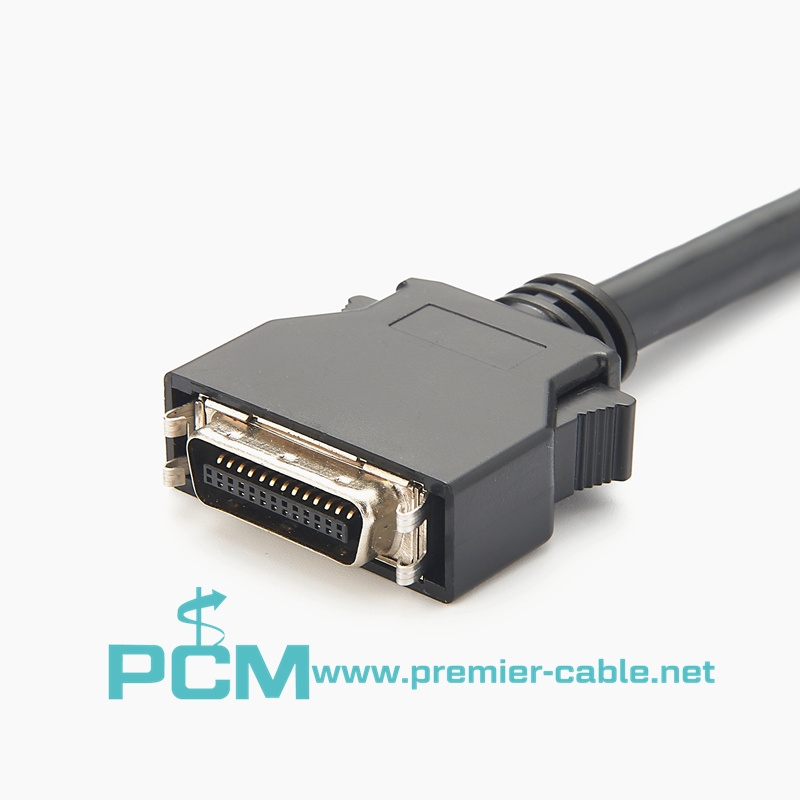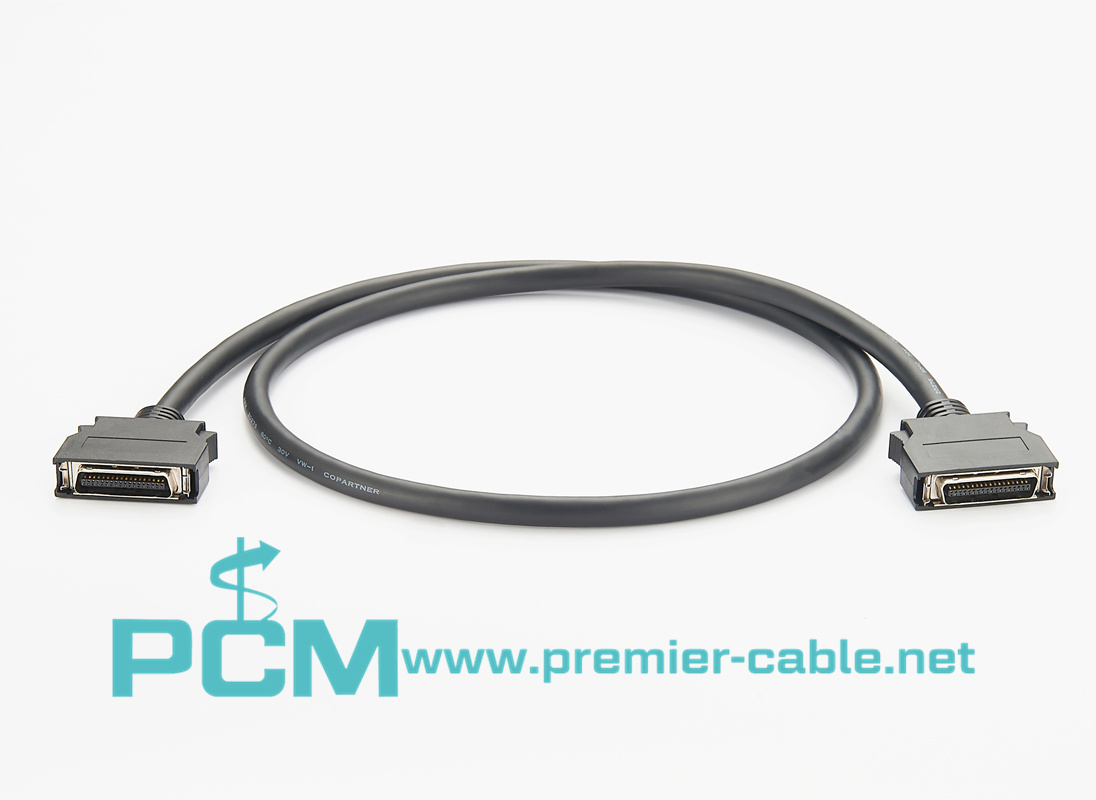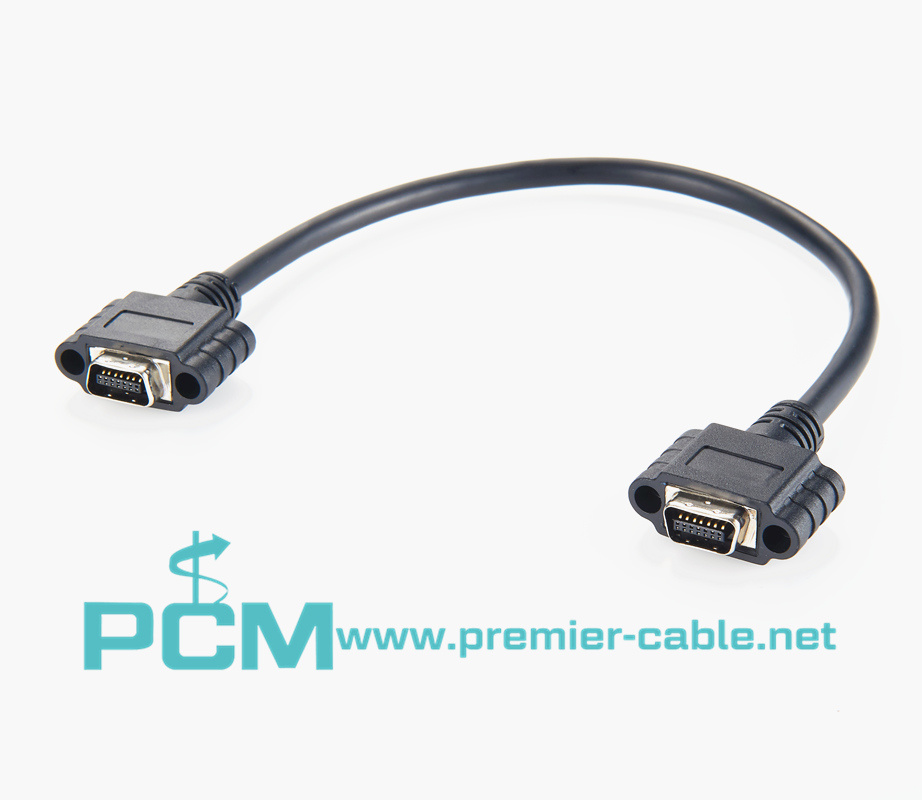 Esperanto
Esperanto
 Shqiptare
Shqiptare
 Euskara
Euskara
 Zulu
Zulu
 Latinus
Latinus
 Cymraeg
Cymraeg
 தமிழ்
தமிழ்
 Slovak
Slovak
 Slovak
Slovak
 Afrikaans
Afrikaans
News Center
What is Small Computer System Interface ?
Publish:
2022-08-29 17:32
Source:
www.premier-cable.net
What is Small Computer System Interface ?
Small Computer System Interface (SCSI, Small Computer System Interface) is an independent processor standard used for system-level interface between computers and peripheral devices (hard disks, floppy drives, optical drives, printers, scanners, etc.).
The SCSI standard defines commands, communication protocols, and the electrical characteristics of the entity (in OSI terms, it occupies the physical layer, link layer, socket layer, and application layer), and the largest part of the application is on storage devices (such as hard disks, tape drives) );
The devices that SCSI can connect include scanners, optical devices (such as CDs, DVDs), printers, etc. The SCSI command lists the supported devices SCSI peripheral devices.
The SCSI interface is a general-purpose interface. The host adapter and eight SCSI peripheral controllers can be connected to the SCSI bus.
SCSI is a multitasking interface with bus arbitration. Multiple peripherals hanging on a SCSI bus can work at the same time, and the devices on the SCSI occupy the bus equally.
The SCSI interface can transmit data synchronously or asynchronously, the synchronous transmission rate can reach 10MB/s, and the asynchronous transmission rate can reach 1.5MB/s.
When the SCSI interface is connected to an external device. Its connecting cable can be up to 6m long.
SCSI-1
SCSI-1 is the most primitive version, the frequency of asynchronous transmission is 3MB/s, and the frequency of synchronous transmission is 5MB/s. Although almost obsolete, it is still used in some scanners and internal ZIP drives, using a 25-pin connector.
If you connect a SCSI-1 device to your SCSI card, you must have an internal 25-pin 50-pin interface cable; if you use an external device, you can't use any of the internal interfaces (that is, the internal interfaces are all at this time. cannot be used).
SCSI-2
The early SCSI-2, called FastSCSI, increases the data transmission rate from the original 5MB/s to 10MB/s by increasing the frequency of synchronous transmission, supports 8-bit parallel data transmission, and can be connected to 7 peripherals.
WideSCSI, which appeared later, supports 16-bit parallel data transmission, and the data transmission rate is also increased to 20MB/s, which can connect 16 peripherals. This version of SCSI uses a 50-pin connector and is primarily used in scanners, CD-ROM drives, and older hard drives.
SCSI-3
In 1995, a higher-speed SCSI-3, called UltraSCSI, was born, and the data transfer rate also reached 20MB/s. It increases the synchronous transfer clock frequency to 20MB/s, a technology that improves the data transfer rate.
If you use the Wide mode of 16-bit transmission, the data transfer rate can be increased to 40MB/s. This version of SCSI uses a 68-pin connector and is mainly used on hard disks.
The typical feature of SCSI-3 is to greatly increase the bus frequency and reduce the interference of the signal, thereby enhancing its stability.
There are many models of SCSI-3, the transmission frequency of Ultra (fast-20) is 20MHz, the data bandwidth is 8 bits, and the transmission rate is 20MBps
In addition to SCSI, IDE is also a very common interface. From the point of view of ease of use, IDE is more suitable for ordinary users. In addition, personal computer users not only need to configure few peripherals, but also do not require high speed, so it is more suitable to use IDE interface.
In addition, IDE also has the characteristics of high cost performance and wide application. Although the SCSI interface has many unparalleled characteristics, no matter from which point of view, the interface and the peripherals using the interface are too expensive to be affordable by ordinary users, which also determines the limitation of its actual use range.
1. The working mode of the IDE requires the full participation of the CPU. When the CPU reads and writes data, it cannot perform other operations. In the multitasking operating system of Windows 95/NT, this situation will naturally cause the system response to be greatly slowed down.
The SCSI interface controls the read and write operations of data completely through an independent high-speed SCSI card, so the CPU does not have to waste time waiting, which can obviously improve the overall performance of the system.
However, the IDE interface has also made great improvements to improve this problem. It has been possible to use DMA mode instead of PIO mode to read and write. The data exchange is responsible for the DMA channel, which can greatly reduce the CPU usage.
Nevertheless, comparing the CPU usage of SCSI and IDE, it can be found that SCSI still has considerable advantages.
2. The scalability of SCSI is larger than that of IDE. Generally, each IDE system can have 2 IDE channels, and a total of 4 IDE devices can be connected, while the SCSI interface can connect 7-15 devices, which is much more than IDE, and the connected cables Also much longer than IDE.
3. Although the price of SCSI equipment is higher, compared with IDE, the performance of SCSI is more stable, durable and more reliable.
DFP 20 Pin to MDR 20 Pin Cable
MDR 20 pin SCSI cable assembly
SCSI MDR 26 Pin Cable connector
SCSI HPCN 36 pin cable connector
SCSI MDR 14 Pin Cable Connector
Tel : 0086-0139-2949-7934
Skype : james198585
Email : James@premier-cable.net
Email : sales@premier-cable-mfg.com
Website : www.premier-cable.net





Related News
What is a terminal block used for?
While there are many factors to consider when designing an overall system, terminal blocks are an optimal solution for complex electrical system connections. With a variety of color options and configurations, Premier Cable’ terminal blocks offer a range of options to meet your design challenges.
CAN-bus has been widely used in various automation control systems. For example, CAN-bus has incomparable advantages in various fields such as automotive electronics, automatic control, smart buildings, power systems, and security monitoring.
Introduction to M12 connector pin coding
M12 encoding types are A encoding, B encoding, D encoding and X encoding. A-code, B-code and X-code are some of the earliest developed and longest-available M12 connectors. The latest M12 coding types currently under development are K coding for AC and L coding for PROFINET DC.
Cables – What are the correct cable sizes for an NMEA 2000 network?
The three different sizes of NMEA 2000 certified DeviceNet standard cabling are "micro," "mid," and "mini."
What are the advantages of NMEA 2000?
The Premier Cable Starter Kits provide everything you need to get to create a basic NMEA 2000 network from scratch.
The role of DeviceNet terminal resistor
DeviceNet_network is a fieldbus network protocol based on Controller Area Network (CAN). In the DeviceNet network, the terminal resistor plays the role of compensation and protection for signal transmission. The function of the terminal resistor is to eliminate signal reflection and interference and ensure the signal transmission quality.
